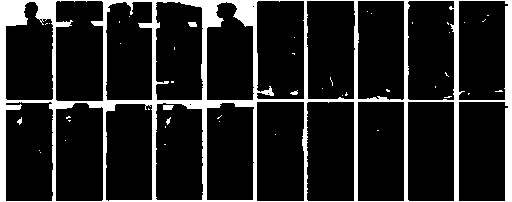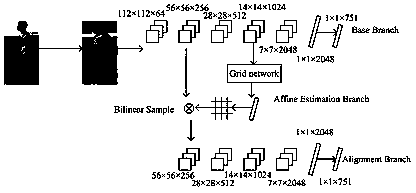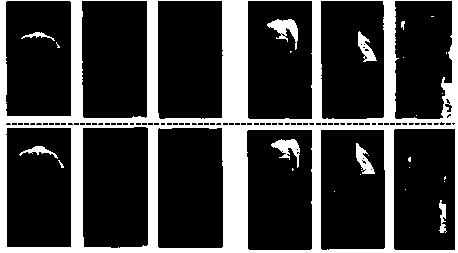A pedestrian re-identification method based on a random erasure pedestrian alignment network
A pedestrian re-identification and pedestrian technology, applied in the field of computer vision, can solve problems such as network over-fitting and reduced matching accuracy
- Summary
- Abstract
- Description
- Claims
- Application Information
AI Technical Summary
Problems solved by technology
Method used
Image
Examples
Embodiment Construction
[0026] The present invention will be further described below in conjunction with the accompanying drawings.
[0027] Such as Figure 1-9 As shown, a pedestrian re-identification method based on random erasing pedestrian alignment network, including the following steps:
[0028] Step 1, preprocessing the original pictures in the data set by random erasing data enhancement;
[0029] Random erasing is performed with a certain probability, for small batches of images I , assuming that the probability of its random erasure is , the probability that the image is not erased randomly is , images with different degrees of occlusion will be produced during the random erasing process.
[0030] Randomly select a rectangular area in an image , and then erase the original pixel with a random value.
[0031] The area of the image is
[0032] , (1)
[0033] in: W is the width of the pedestrian image, H is the height of the pedestrian image.
[0034] Erase the height and widt...
PUM
 Login to View More
Login to View More Abstract
Description
Claims
Application Information
 Login to View More
Login to View More - R&D
- Intellectual Property
- Life Sciences
- Materials
- Tech Scout
- Unparalleled Data Quality
- Higher Quality Content
- 60% Fewer Hallucinations
Browse by: Latest US Patents, China's latest patents, Technical Efficacy Thesaurus, Application Domain, Technology Topic, Popular Technical Reports.
© 2025 PatSnap. All rights reserved.Legal|Privacy policy|Modern Slavery Act Transparency Statement|Sitemap|About US| Contact US: help@patsnap.com



